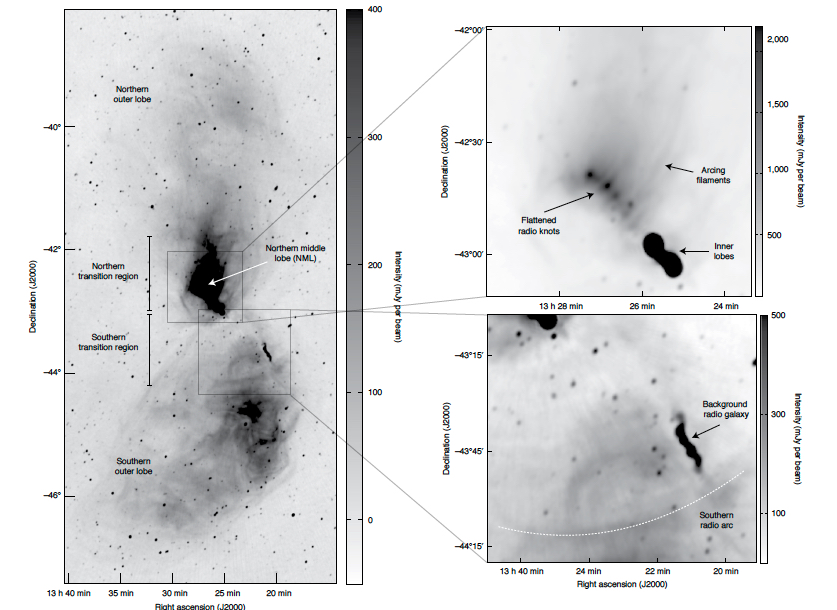Daily Image
24-02-2022Colloquium: A new look at Centaurus A: Multiscale feeding and feedback
| Submitter: | Ben McKinley |
| Description: | Centaurus A is the closest radio galaxy, at a distance of around 4 Mpc, and has been studied intensely across the full electromagnetic spectrum for many years. Its proximity allows us to study its features in unparalleled detail, resolving individual stars in its host galaxy and tracking the material ejected from its active radio jets. Traditional radio observations and imaging techniques, however, have been hampered by the wide field of view (around 8 degrees) and extreme dynamic range required to capture the full extant of its radio features across all scales. In this talk I will describe our new low-frequency radio images from the Murchison Widefield Array, which overcome these limitations and show evidence for a broad, bipolar outflow with velocity 1100 km per sec and mass outflow rate of 2.9 solar masses per year. In this work we combine our data with the plethora of multi-scale, multi-wavelength, historical observations of Centaurus A to probe a unified view of feeding and feedback, which we show to be consistent with the Chaotic Cold Accretion self-regulation scenario. Since my work also extends to 21-cm cosmology and this is an area of interest for many members of ASTRON/JIVE, I will also briefly mention a couple of projects based at Curtin that are attempting to detect the global neutral hydrogen signal from the Cosmic Dawn and Epoch of Reionisation. Figure Caption |
| Copyright: | Ben McKinley |
| Tweet |  |
